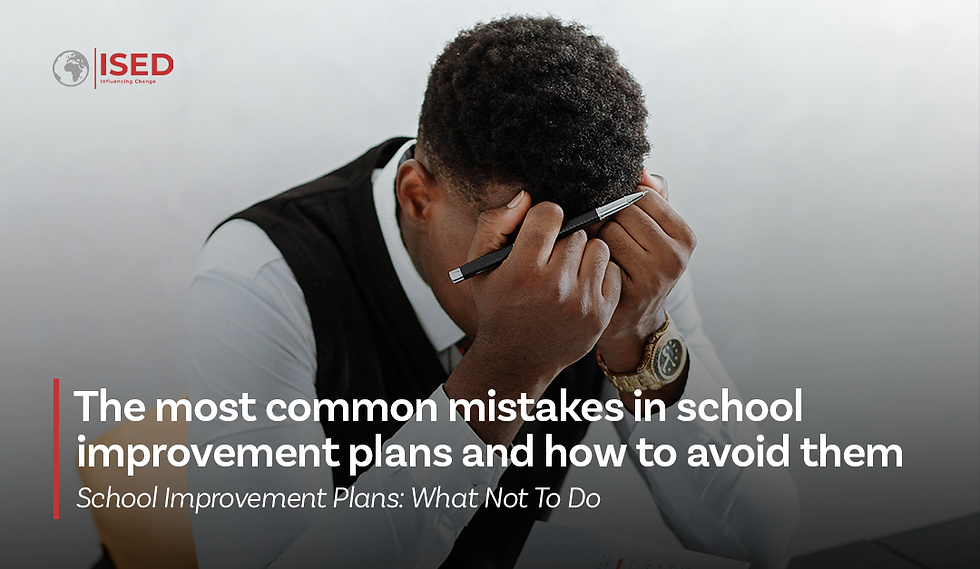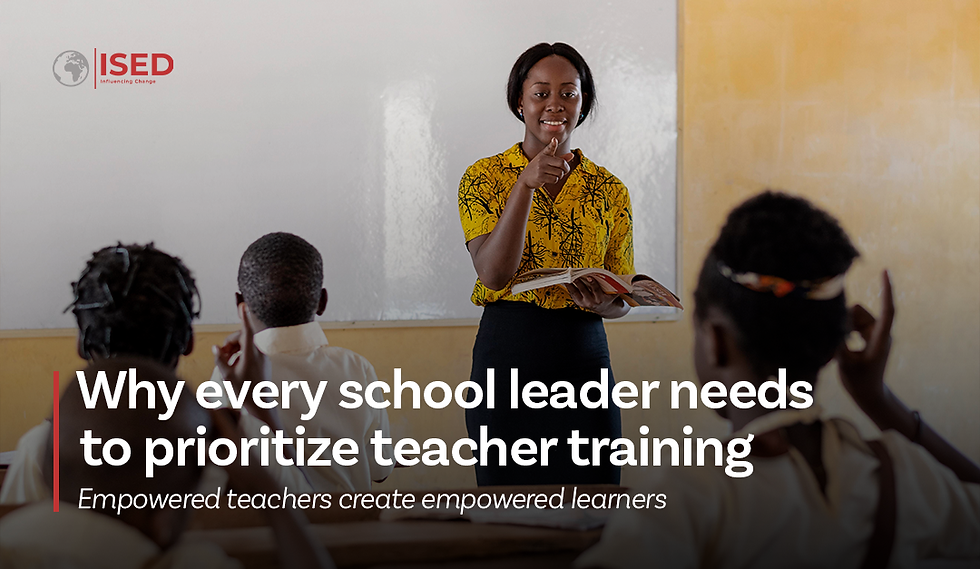Reflection: The key to improved teacher performance
- admin37502
- Aug 4, 2023
- 3 min read
Updated: Aug 5, 2023
By Dr Joy Isa
Reflection. Meditation. Contemplation over time. Deliberate evaluation of the status quo to determine ways forward. All these words and phrases point to the need to spend time in thought as part of the reflection process. According to renowned educator and author Jim Knight, reflection happens in three ways: looking back, looking at, and looking ahead.
“When teachers look back at a lesson, they explore what worked and what didn’t work, and a look back often prompts them to plan to act differently in the future[1].”
This process has also been described as the lesson evaluation or lesson review. Teachers are encouraged to make notes on their lesson plans, especially about the proposed changes for the next lesson. This is a reflective process that some take for granted and inadvertently limit their ability to improve on themselves as educators.
When we mark students’ work and share feedback, we often tell them what went well (WWW) and what could have been even better if they had tried some alternatives (EBI). This simple process of giving meaningful feedback requires reflection on the teacher’s part. When a group of teachers come together to review what went well (WWW) over the past week and what could even be better (EBI), they engage in reflective practices that lead to professional learning. They improve their performance in the next week because they took the time to reflect and chart the next course using that data. Data informed decision making involves reflection.
Jim Knight extends reflective practices to include reflection learning. This is done within a professional learning community (PLC) where the adults identify a challenge (perhaps a difficult student, employee, co-worker), review principles that help them problem solve on the go (motivation strategies, for example) and as a group, they all reflectively consider which motivational strategies could be adopted or adapted to motivate the student or employee. This process could become innovative where the group invents new strategies to try out in their different contexts. This way, they are learning collaboratively and reflectively applying that learning to their real-life contexts.

"Time should be set aside for the whole school or department to review student academic data from the previous session to determine value added margins, and to set targets for the new session"
Dedicating the time to building a PLC where reflective practices happen is the way to go for educators as you plan the start of the new academic year.
Time should be set aside for the whole school or department to review student academic data from the previous session to determine value added margins, and to set targets for the new session. This is pivotal to improved teacher performance and improved student attainment.
Understanding how to disaggregate and analyse the data becomes the ‘learning session’ for the teachers and school leaders. Using authentic data from the previous academic provides real-life context and the opportunity for group reflection but also for individual teachers to reflectively consider what they should do differently to raise the identified value-added margins. It is also important to reflectively review student non-academic data – attitudes and dispositions. The data from wellbeing surveys and attitudinal assessments are equally important and should be reviewed in the same way.
Suffice it to say that reflection will make a marked difference in teachers’ work ethics in the coming years. Teaching using the same approach you have used over the years won’t cut it anymore. We all have to innovate on the go – so we can make the learning in our classrooms relevant to the children in the room (not yesterdays’ children).
[1] Jim Knight, Unmistakable Impact, p 37.







Comments